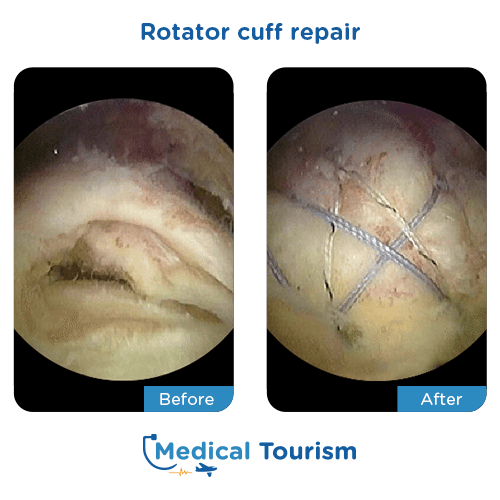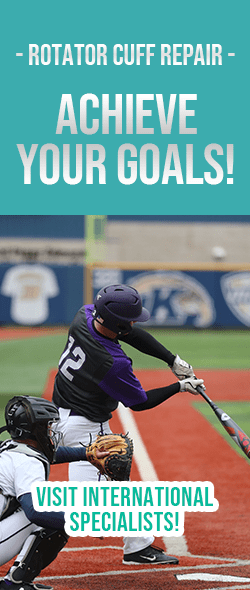The best board-certified doctors abroad
Rotator cuff repair information and international destinations
Rotator cuff repair involves the restoration of damaged tendons responsible for shoulder rotation. Injuries and the natural wear and tear caused by regular activities are the primary reasons why individuals may require this procedure.
Depending on the patient's condition, doctors can opt for either open surgery or arthroscopy for rotator cuff repair, with the latter being more commonly used. Open surgery may require an overnight hospital stay, while arthroscopy allows for same-day discharge (a same-day procedure). In some cases, a combination of both techniques, known as mini-open surgery, may be utilized, potentially requiring an overnight stay. These procedures can be performed under general or local anesthesia.
Book an appointment with board-certified orthopedists in the best international destinations!
Benefits
Relief from joint pain
Improved shoulder function
Potential for same-day discharge
Arthroscopy offers a less invasive approach
Improved shoulder function
Potential for same-day discharge
Arthroscopy offers a less invasive approach
Rotator cuff repair
Procedure:
2 hrs.
Hospital stay: 2 - 2:50 hrs.
Cleared to fly: 7 days
Hospital stay: 2 - 2:50 hrs.
Cleared to fly: 7 days
After surgery
Out of town patients’ follow-ups can be scheduled virtually after the procedure with the orthopedic surgeon. Patients are clear for flying after 7 days of the rotator cuff repair.
Note: Follow-ups can be arranged as face-to-face or virtually. If needed, you can go to your primary care physician to remove sutures or get medication adjustments.
Before and after images
View before and after pictures from real patients.

View more



Rotator cuff repair surgery frequent questions
Get answers to our most frequently asked questions and what to expect after the procedure.
Am I a candidate for rotator cuff repair surgery?
Typically, individuals who require heavy arm usage or athletes who have sustained a shoulder injury may be candidates. These individuals may continue to experience persistent pain and weakness in the shoulder despite other treatment options.
Do I need to wear a sling?
The duration of sling usage will be determined by your doctor and personalized to your needs. Typically, wearing a sling is required for approximately four to six weeks. However, there may be instances when you need to remove the sling temporarily for specific exercises as instructed by your doctor or physical therapist.
What precautions should I take after surgery?
Specific post-surgery precautions will be provided by your doctor based on your individual circumstances. Common precautions include keeping your arm close to your body while wearing the sling and using support, such as a pillow, under your elbow when lying on your back.
When can I resume sports activities?
The timeline for returning to sports activities varies depending on the nature of the activity. Generally, it may take around four to six months after surgery before you can start engaging in sports again. It is recommended to consult our experienced orthopedists to determine the appropriate timing based on your unique situation.
How long is the recovery period?
Recovery varies for everyone, and times may differ. Most patients can return to a low-intensity working environment after approximately two weeks. However, engaging in more physically demanding activities may require a longer recovery period, typically around four to six months.
Disclaimer: This information does not reflect the medical advice from our clinics. All cases are different and this treatment may not suit you. Always refer to a medical professional with the certification and experience. All of our physicians are fully qualified to perform these procedures. For more information and diagnosis contact one of our top specialized clinics.
In all medical procedures, there are chances of complications, the specialist will provide you detailed information about the risks of the procedure, talk to the specialist directly.
In all medical procedures, there are chances of complications, the specialist will provide you detailed information about the risks of the procedure, talk to the specialist directly.




